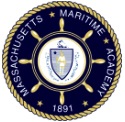MT-3131
Meteorology
Course Description
This course gives a basic understanding of meteorology, and its application to shipboard operations. The student will have a knowledge of meteorological instruments and their application, knowledge of the characteristics of various weather systems, reporting procedures and recording systems, and the ability to apply the meteorological information available. Students will complete a practical assessment of reading and interpreting weather charts and demonstrate the ability to forecast future weather events. In addition, the knowledge gained in this subject will serve as the basis for further training to the level of chief mate and master.
Learning Objectives
Demonstrate knowledge and understanding of the following STCW elements:
- OICNW-A1.09 Ability to use and interpret information obtained from shipborne meteorological instruments
- OICNW-A1.10 Knowledge of the characteristics of the various weather systems
- OICNW-A1.10 Weather system reporting procedures and recording systems
- OICNW-A1.11 Ability to apply the meteorological information available
Demonstrate proficiency in the following skills:
- OICNW-1-7C Determine expected weather conditions
Other Objectives
At the conclusion of the course, students will be able to:
- Describe how the atmosphere interacts and produces weather.
- Describe the difference between weather and climate.
- Determine true wind form a moving vessel and what course to steer to achieve a desired relative wind.
- Interpret weather charts, satellite images and text information to assess present and future weather conditions.
- Assess cloud types, fronts, sea heights, fog conditions to assist in confirming validity of weather reports.
- Successfully pass the Meteorology section of the Navigation General portion of the USCG License Exam.
